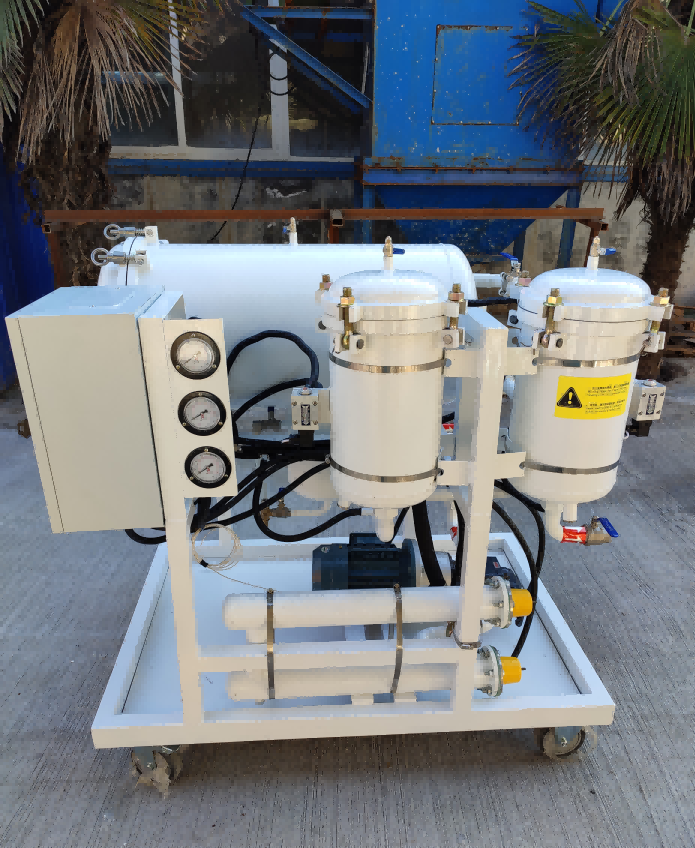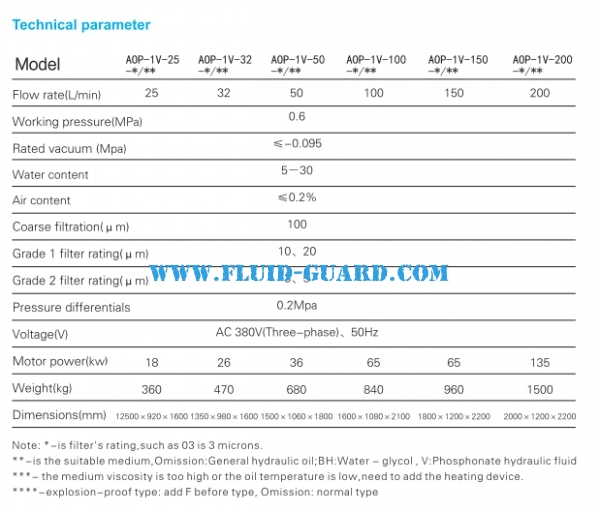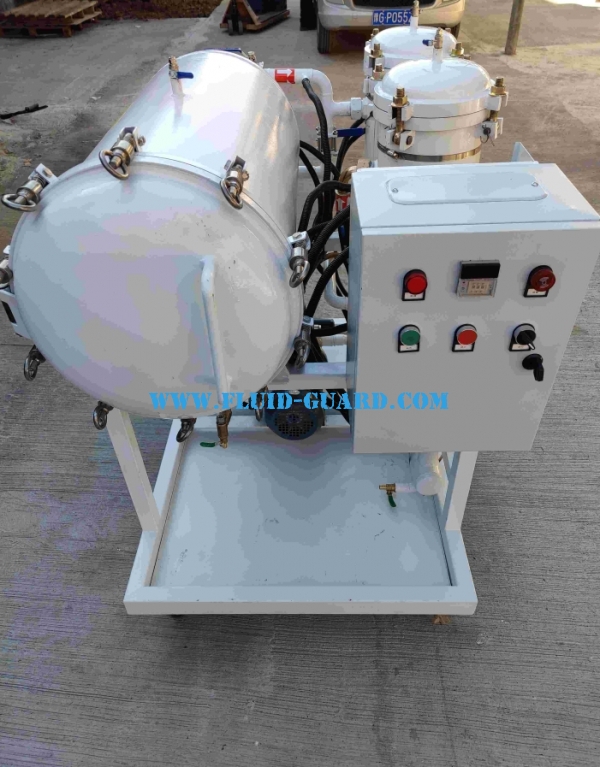
Product Details
Technical principles
Different liquids have different saturated vapor pressures. At a temperature of 70°C, water starts to boil at a pressure of approximately 3×104Pa, while oil can only boil at a low pressure of 5Pa.At the same temperature, the saturated vapor pressure of oil is much lower than that of water.Therefore,when the pressure of the oil liquid surface is reduced to below the saturated vapor pressure of water by vacuuming, the water in the oil liquid will violently vaporize and overflow from the oil in the form of steam.
Through the suction of the vacuum, the oil enters the vacuum tank from the top and sprays down through the nozzle. The water in the oil vaporizes in the vacuum chamber and is pumped out by the vacuum pump,and the oil after water removal is discharged from the bottom.The middle of the vacuum chamber is filled with lipophilic material, so that the sprayed oil is dispersed on the surface of the filling material to form a thick oil film to increase the area of the gas-liquid interface and prolong the oil staying in the gas phase space.
The effect of vacuum water removal is mainly related to the working vacuum degree and oil temperature. The lower the vacuum degree and the higher the temperature,the better the water removal effect.The oil temperature is generally around 60° C. Excessive temperature will accelerate the oxidation of the oil.
For hydraulic oil, the vacuum degree is generally 60O-70OPa, which can reduce the water content in the oil to below 1000ppm. For transformer insulating oil, a higher degree of vacuum can be used, and the water content can be reduced to 10 ppm.
Vacuum dehydration can effectively remove all kinds of water in the oil, and can remove air and various volatile substances in the oil.
Clear the water
The free water and dissolved water in the oil deteriorate the oil by reducing lubricity, oxidation and acid formation. The non-aqueous oil is not easy to oxidize and form organic acids even if exposed to high temperature. The presence of organic acid compounds causes corrosion. Water accelerates the thermal degradation of oil to produce particles or carbonaceous substances.The presence of water also causes the oil to polymerize to form macro-molecules. Polymerization causes changes in viscosity, creating harmful solids that clog orifices and wear system components.
AOP-1V high-efficiency vacuum oil filter can remove 100% of free water and more than 95% of dissolved water.
Clear the Air
AOP-1V efficient vacuum oil purifier can remove 100% of free air and up to 75% of dissolved air, The air is removed as the oil passes through the vacuum tank. Other gases depending on the cycle time is reduced to trace amounts.
Clear the solid particles
In order to remove suspended particulate matter, ZLYC high-efficiency vacuum oil filter can filter out particles that cause abrasive wear in bearings, pumps and valves through three-stage filtration. It also removes sludge that may accumulate in the gap between the valve core and the valve sleeve and cause seizure and instability in the electro-hydraulic servo valve. In insulating oil, the secondary side filter level can prevent electrical breakdown caused by the bridging effect of charged particles.


Zhengzhou Fluidguard Machinery Equipment Co., Ltd. TEL: 0086-0373-5128206
Zhengzhou Fluidguard is a collection of filter strainer, filter element, oil purifier and air compressor design and manufacturing, online sales and marketing as one of the modern manufacturers